Looking to add a Weather Loach to your aquarium, but don’t know where to start?
With years of experience caring for Loaches at Fluvico and hours of extra research to find out your most common questions, this Weather Loach Guide is your ultimate resource for caring for these cute little loaches.
You can use the navigation below to find the most popular Weatherloach Care Questions & Solutions.
- Alternative Common Names: Pond Loach, Dojo loach, Oriental Weatherloach, Japanese Weatherloach or Oriental Weatherfish
- Scientific Name: Misgurnus anguillicaudatus
Table of Contents
Love Loaches? View All – Fluvico Loach Care Guides!
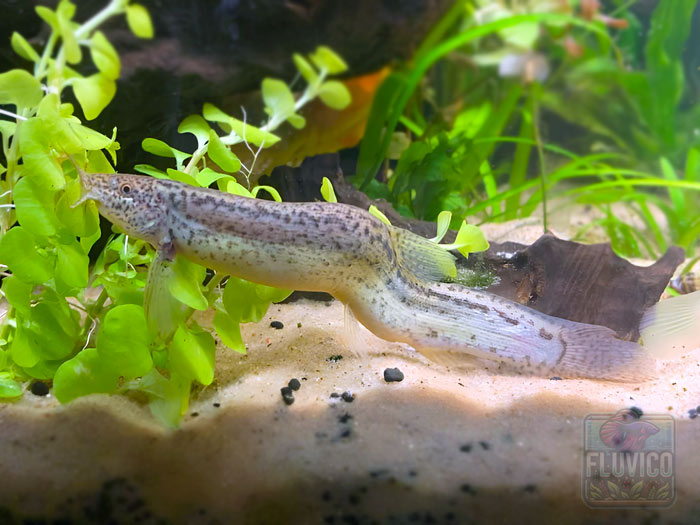
Weather Loach (Origins & Appearance)
Where do Weather Loaches come from?
East Asia is their home. They thrive in freshwater environments here, from rivers to ponds, showcasing their adaptability to various aquatic settings.
Are Weather Loaches an invasive species?
Yes, they pose a threat outside their native habitat. In places like Australia and the USA, they disrupt local ecosystems, proving their resilience can be a double-edged sword.
What is the natural habitat of the Weather Loach?
They prefer rivers, lakes, and ponds with soft, sandy, or fine gravel bottoms. Their ability to thrive in diverse water conditions, even those of lower quality, is remarkable.
How long do Weatherloaches live for?
They can live up to 10 years with proper care. This longevity reflects their hardiness and adaptability in both wild and captive environments.
How big do Weatherloaches grow?
In the wild, they can reach up to 12 inches (30 cm). However, in captivity, a length of about 6 inches (15 cm) is more common, influenced by the conditions they’re kept in.
How to tell male from female Weather Loaches?
Identifying males from females can be challenging. Males may have slightly thicker and more pointed pectoral fins, but this is not always a reliable indicator.
What colours are Dojo Loach available in?
Their colour range is quite diverse, including pink, orange, albino, silver, spotted gray and full gray. This variety adds a vibrant touch to aquariums, making them a popular choice among enthusiasts.
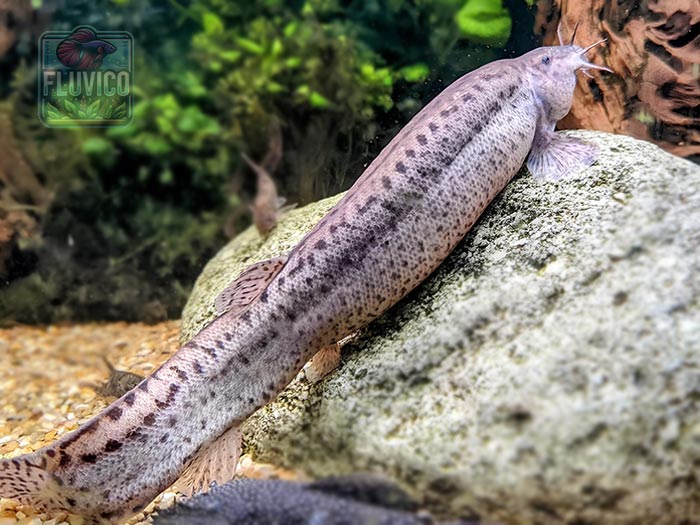
Fun Facts about the Dojo Loach
Can Weather Loaches survive outside of water?
Yes, they can. These creatures are equipped with a unique biological adaptation that allows them to breathe atmospheric air through their intestines. This capability enables them to survive periods outside of water, a trait particularly useful in environments where water bodies may temporarily dry up.
Can Weatherloaches predict the weather/storms?
Indeed, they can sense changes in atmospheric pressure, thanks to their highly sensitive lateral line system. This biological feature detects minute changes in the environment, including the drop in atmospheric pressure that precedes storms. Their response to these changes, often in the form of increased activity or erratic swimming, acts as a natural indicator of impending weather shifts.
What is the Weather Loach Dance?
The “Weather Loach Dance” is their response to atmospheric pressure changes. This behavior, characterized by vigorous swimming and sometimes standing on end, is more than just a quirky trait. It’s a biological reaction to the imminent changes in their environment, signaling a storm or significant weather event is on the horizon. This dance is a direct result of their sensitive lateral line system picking up on the subtle shifts in atmospheric pressure.

Behaviour & Tankmates
Why are my Weather Loaches hiding?
They seek safety and comfort. These fish naturally look for hiding spots to feel secure and rest. If they’re new to the tank or if the environment feels too open and exposed, they’ll find places to hide. Providing plenty of hiding spots like caves, plants, and driftwood is essential for their well-being.
Are Weather Loaches Aggressive / territorial?
No, they’re quite peaceful. They prefer company and are known for their social, gentle nature. They rarely show aggression towards other fish and are not territorial. They thrive in a community tank setting with species of similar temperament.
Can Weather Loach Jump out of the tank?
Yes, they can and will if given the chance. They’re known to jump, especially if the tank is not properly covered or if they’re startled. Always ensure your tank has a secure lid to prevent any adventurous leaps to freedom.
Why is my Weather Loach swimming frantically / upside down?
This could be a response to stress or poor water quality. They might swim frantically or even upside down if the water conditions are not ideal or if there’s a sudden change in their environment. Check your water parameters and make sure the tank is stable and clean.
Weather Loach & Betta together?
It’s risky. While Weather Loaches are peaceful, Bettas can be territorial and aggressive, especially towards fish with long, flowing fins. If you decide to keep them together, ensure your tank is large enough with plenty of hiding spots and closely monitor their interaction.
Can Weather Loaches live with Goldfish?
Yes, they can coexist well. Both prefer cooler water temperatures and have peaceful dispositions. However, ensure the tank is spacious enough as both species can grow quite large and have different dietary needs that must be met for each to thrive.
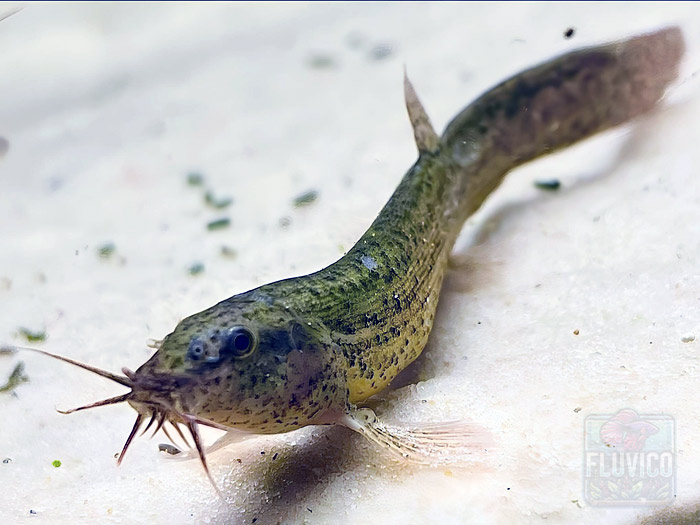
Breeding Weatherloaches
How do Weather Loaches Breed?
They need a trigger to start breeding, typically involving a change in temperature and light. Lower temperatures in winter and increased light in spring encourage breeding. Males court females for hours, wrapping around them during egg release, then fertilizing the eggs.
Why won’t my Weatherloach lay eggs?
Breeding requires specific conditions. If your tank doesn’t mimic the natural triggers of lower temperatures in winter and increased light in spring, they might not breed. Ensure their environment closely matches these seasonal changes to encourage egg laying.
What do Weather Loach eggs look like?
The eggs are fertilized externally after the female releases them during the breeding embrace. While specific details on the appearance weren’t provided, like many fish eggs, they’re likely to be small and somewhat translucent, becoming more opaque as they develop.
What do Weather Loach babies (Fry) look like?
Fry are incredibly small at birth and require infusoria or specially formulated commercial fry food for the first week. As they grow, they can be transitioned to baby brine shrimp and powdered spirulina pellets. Initially, they resemble miniature versions of adults but lack the distinctive patterns seen in mature loaches.

Setup & Tank
Can Weather Loaches live in tropical aquariums/tanks?
Yes, but it’s not their preferred environment. They can adapt to warmer waters but thrive in cooler conditions. Tropical temperatures can shorten their lifespan, so cooler water is recommended for their well-being.
What temperatures are best for weather loaches?
Cooler water temperatures between 50°F to 82°F (10°C to 28°C) are ideal. They are versatile but prefer the lower end of this range to mimic their natural habitat conditions.
Can Weatherloach survive in cold water during winter?
Definitely. They are exceptionally resilient in cold water, capable of surviving temperatures as low as 40°F (4°C). This adaptability makes them suitable for various climates, including outdoor ponds.
Can Weatherloaches live in outdoor ponds?
Absolutely. Outdoor ponds that replicate their natural environment are perfect, especially if the water temperature and quality are maintained within their preferred range. They can thrive in ponds year-round in suitable climates.
Minimum Tank Size for Weather Loaches
- Minimum: For a small group of 3 weather loaches, start with a 29-gallon tank. This size allows enough space for them to move around but is the absolute minimum and should be considered a temporary solution.
- Okay: An 55-gallon tank is suitable for keeping a group of 5 to 6 weather loaches. It provides adequate space for their exploratory and foraging behaviors, promoting a healthier environment.
- Perfect: For the best care and to fully accommodate their social nature and activity level, a 75-gallon tank or larger is ideal. This size supports a larger group, ensuring ample space for each loach to thrive and exhibit natural behaviors.
What Ph do weather loach thrive in?
A pH range of 6.5 to 8.0 is best for them. This range supports their health and is reflective of the diverse water conditions they can adapt to in the wild. Regular monitoring and adjustments ensure the water remains within this ideal pH range.
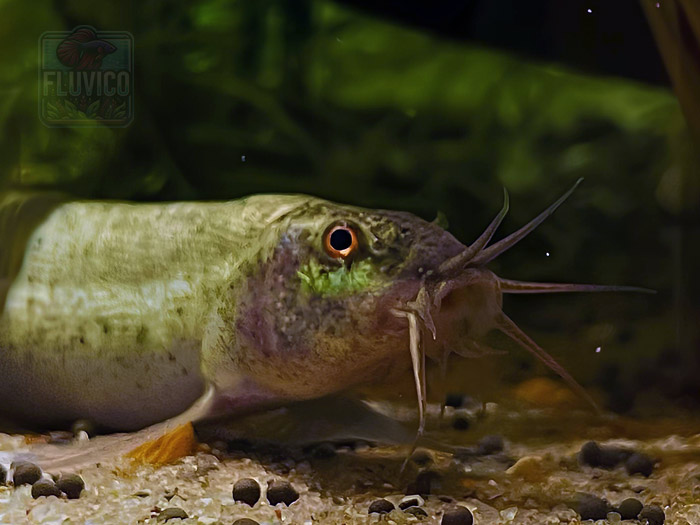
Diet & Tank Mates to Avoid
What do I feed my Weather Loaches?
Offer a mix of sinking pellets, frozen foods like mosquito larvae and Daphnia, and vegetables. They’re not picky and will also hunt for small snails with their sensory barbels. Variety in their diet keeps them healthy and active.
Can you hand feed Dojo Loaches?
Yes, and they seem to enjoy it. These loaches often seek out human interaction and may even investigate your hands during tank maintenance. They’re known to accept food directly from you, showing their trust and comfort.
Can Weatherloaches live alone?
They prefer company. Keeping them in small groups allows for social interaction, which is crucial for their well-being. Solitary loaches may hide more and be less active.
Do weather loaches eat Algae?
They do, but it’s a small part of their diet. While they’ll graze on algae, they need a more varied diet to stay healthy. Don’t rely on them as your primary algae cleaners.
Do Weatherloaches eat snails?
Indeed, they do. Their barbels help them hunt for snails, making them a natural choice for controlling unwanted snail populations in your aquarium.
Do Weatherloaches eat Cherry Shrimp?
They might, especially if the shrimp are small. Larger cherry shrimp are usually safe, but their fry could be at risk. Monitor their interaction to ensure the shrimp’s safety.
Will Weather Loaches eat other fish?
Generally, no. They are peaceful and prefer scavenging to hunting other fish. Ensure they’re well-fed to avoid any potential risk to smaller, weaker fish.
Will Weatherloach eat fish eggs & small fry?
Possibly, if given the chance. As opportunistic feeders, they may consume eggs and very small fry. Keep this in mind if breeding other fish in the same tank.
Why won’t my Weatherloach eat?
Stress, illness, or unsuitable diet could be the cause. Check for signs of disease, ensure the water quality is optimal, and try varying their diet to stimulate their appetite.
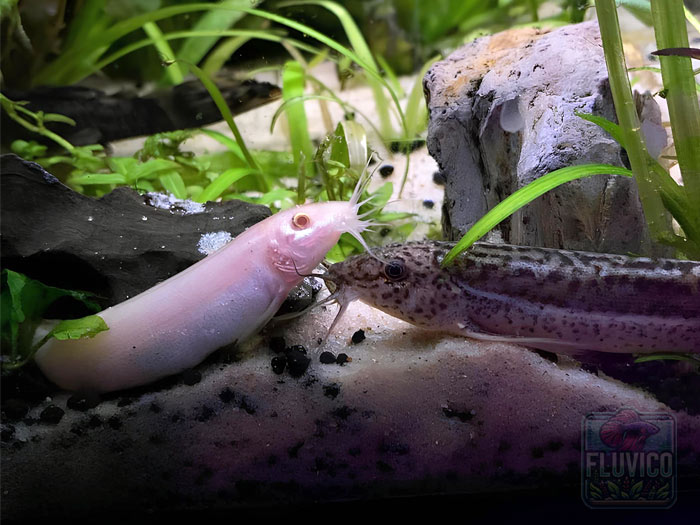
Is my weather loach sick?
Why is my Weather Loach floating?
Swim bladder issues are a common cause. This condition is often a result of dietary problems or sudden changes in water conditions. To assist, consider feeding your fish peas, which can act as a natural laxative, and ensure the water quality is optimal. It’s crucial to monitor the tank’s temperature and maintain it within the suitable range for weather loaches, as fluctuations can exacerbate the problem.
Weatherloach Laying on its side
This indicates stress or health issues. Check your water quality first; ammonia, nitrites, and nitrates should be within safe levels. Also, ensure the tank environment, including temperature and pH, is consistent with the needs of weather loaches. Adjustments may be necessary to provide a more comfortable habitat.
Weather Loach shedding skin/peeling skin
A sign of fungal infection or environmental stress. Maintaining clean and stable water conditions is essential. Consider using aquarium salt at the correct dosage to help address mild fungal issues. For persistent cases, seeking advice on specific antifungal treatments would be beneficial.
Weather loach losing weight
Could be due to parasites or dietary issues. Ensure a balanced diet and consider deworming treatments if you suspect internal parasites. Regularly observe your fish’s eating habits and fecal matter for any signs of health issues.
Why is my Weather Loach turning white?
Stress or fungal infections could be the cause. Ensure the tank’s conditions, such as water quality and temperature, are optimal. For fungal infections, specific treatments may be necessary. Regular tank maintenance and monitoring are key to preventing these issues.
Does my Weather loach have Ick?
White spots resembling salt grains indicate Ick. This parasitic infection requires immediate attention. Treat the tank with Ick medication and consider increasing the water temperature slightly to speed up the life cycle of the parasite, making treatment more effective.
Why does my weather loach have a lump?
Lumps can be caused by infections, tumors, or parasites. Identifying the exact cause is crucial for effective treatment. Consultation with a veterinarian may be necessary for accurate diagnosis and treatment recommendations, especially if the lump is due to tumors or complex infections.
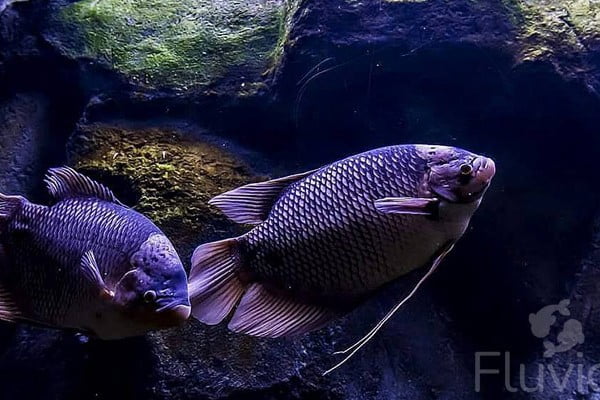


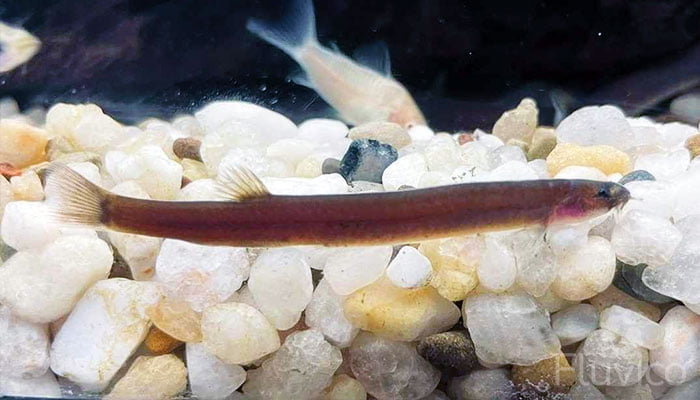
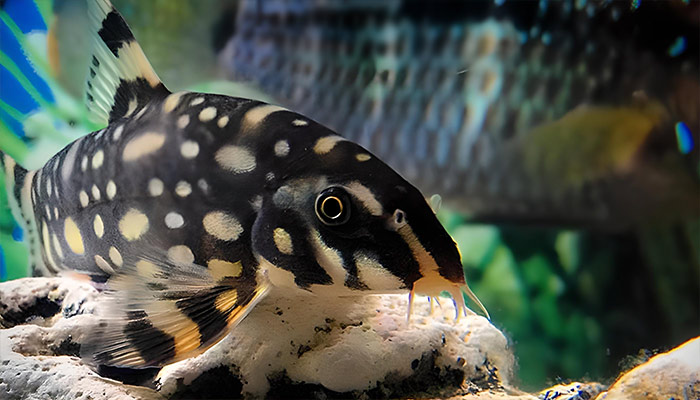
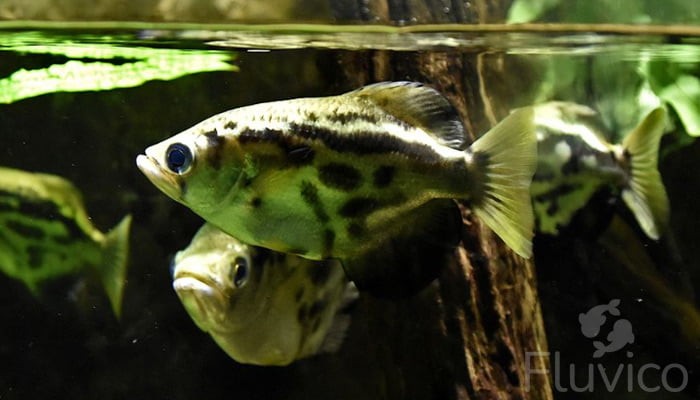
Let us know if you have any more questions about the Weatherloach / Dojo Loach?
Thanks for visiting us,
Charlie : )